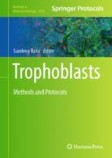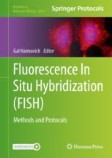Search
Search Results
-
A Three-Dimensional Trophoblast Invasion Microfluidic Platform for Toxicological Screening
To improve our understanding of human placental function and placental cell responses to pregnancy stressors, the development of in vitro models that...
-
In Vivo Quantitative Assessment of Gestational Choriocarcinoma Development and Progression Using Luminescent Trophoblast Cells
Gestational trophoblastic diseases (GTD) are a group of pregnancy-related disorders representing rare human tumors. Among GTD is the gestational...
-
Three-Dimensional In Vitro Human Placental Organoids from Mononuclear Villous Trophoblasts or Trophoblast Stem Cells to Understand Trophoblast Dysfunction in Fetal Growth Restriction
The placentaPlacenta plays a critical role in the efficient delivery of nutrients and oxygen from mother to fetus to maintain normal fetal growth....
-
Quantification of Trophoblast Syncytialization by Fluorescent Membrane Labeling
Trophoblast fusion or syncytialization is a fundamental yet poorly understood process during placental development. Primary cultured cytotrophoblasts...
-
Isolation of Human Villous Cytotrophoblastic Cells from Term Placenta for Transfection
Isolation of villous cytotrophoblastic cells (vCTBs) from placental tissue provides the possibility of studying differentiation of these cells as...
-
Type I Lipoteichoic Acid (LTA) Purification by Hydrophobic Interaction Chromatography and Structural Analysis by 2D Nuclear Magnetic Resonance (NMR) Spectroscopy
Type I lipoteichoic acid (LTA) is a glycerol phosphate polymer found in the cell envelope of diverse Gram-positive bacteria. The glycerol phosphate...
-
Precision-Cut Slice Culture Method for Rat Placenta
Organotypic slice cultures provide several advantages over primary and cell line culture models. Unlike monolayer cultures, organotypic slice...
-
Quantifying the Kinetics of Pilus-Specific Sortase-Catalyzed Crosslinking Using High-Performance Liquid Chromatography
Gram-positive bacteria display pili whose protein components (pilins) are covalently crosslinked by pilus-specific sortase enzymes. These cysteine...
-
Determination of the Crystal Structure of the Cell Wall-Anchored Proteins and Pilins
Surface proteins and pili (or pilus) anchored on the Gram-positive bacterial cell wall play a vital role in adhesion, colonization, biofilm...
-
Bioorthogonal Labeling and Click-Chemistry-Based Visualization of the Tannerella forsythia Cell Wall
The objective of this chapter is to provide a detailed protocol for the peptidoglycan (cell wall) labeling of the periodontal pathogen Tannerella...
-
Visualization of a Cell Wall Hydrolase Inhibitor in Fusobacterium nucleatum by Immunofluorescence Microscopy
Innately present in tears, saliva and mucosal secretions, lysozyme provides a critical defensive strategy to the host by cleaving the...
-
Probing Bacterial Cell Division and Cell Envelope Biogenesis with Live-Cell Fluorescence Microscopy
The development of advanced microscopy techniques has ushered in a new era of research as it helps understand biological processes on a deeper,...
-
Trophoblast Organoids as a Novel Tool to Study Human Placental Development and Function
The human placenta provides the site of exchange between the maternal and fetal bloodstreams, acts as an endocrine organ, and has immunological...
-
Quality Control Assessment of Human Adipose-Derived Hydrogels
Decellularized human-adipose tissue (hDAT) can serve as an alternative to two-dimensional monolayer culture and current ECM hydrogels due to its...
-
Nuclear Transcription Factor Detection
Cellular fate is determined by the activity of nuclear transcription factors. Here, we describe a series of protocols for detecting transcription...
-
A Method for Screening a Kinase Inhibitor Drug Library on ASCs
Breast cancer is an ongoing issue due to its high mortality rates. Obesity enhances the problems associated with breast cancer, meaning there must be...
-
Analyses and Utilization of Selectively Tuned Human Adipose-Derived Stromal/Stem Cell Exosomes
We have developed a hollow fiber bioreactorBioreactor-based production system for manufacturing large quantities of extracellular vesicles (EVs)...
-
Multiplexed Immunofluorescence and Single-Molecule RNA Fluorescence In Situ Hybridization in Mouse Skeletal Myofibers
RNA fluorescence in situ hybridization (FISH) is a powerful method to determine the abundance and localization of mRNA molecules in cells. While...
-
Feline Adult Adipose Tissue-Derived Multipotent Stromal Cell Isolation and Differentiation
Cats are among the most popular household pets. However, compared to other species, there is little information specific to feline adult mesenchymal...
-
DBD-FISH Using Specific Chromosomal Region Probes for the Study of Cervical Carcinoma Progression
Genomic instability is an important biomarker in the progression of cervical carcinoma. DBD-FISH (DNA breakage detection-fluorescence in situ...
